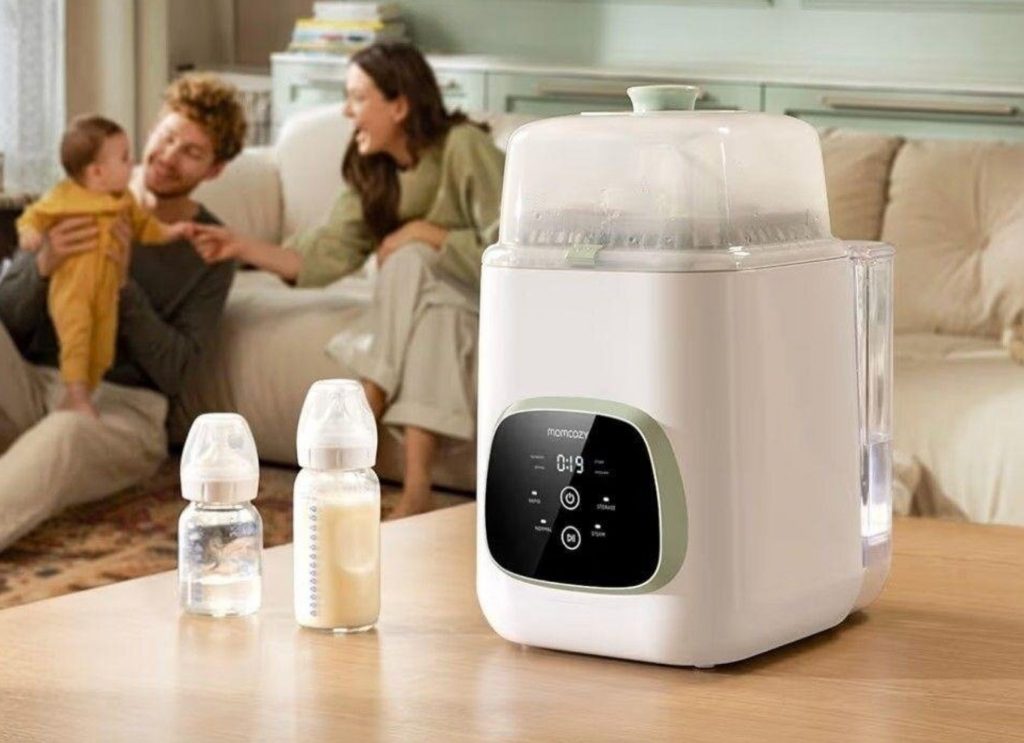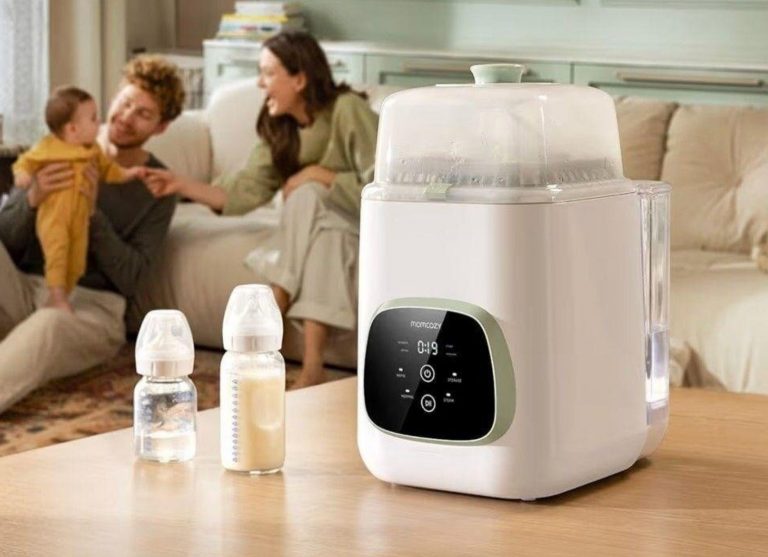“Breast Pump Parts Cleaner Essentials: What to Know Before Buying” is a collaborative post.
If you want things to stay safe and work well, you have to clean your breast pump pieces. Flanges, valves, membranes, and even bottles – each part needs to be washed thoroughly so that germs do not get to your baby and your baby gets fresh milk. A good cleaning tool makes the work simple, reduces the risk, and increases the result – busy moms get support here. Are you pumping full-time, mixing with nursing, or just wanting spotless gear? Choosing the right cleaner needs to be thought through properly. Here are the main features to check, types of cleaners available, how to use them properly, and the common mistakes that people make without knowing that can be useful before buying.
Why Every Mom Needs a Dedicated Breast Pump Parts Cleaner
If you are pumping, this means that your cleaning must be done regularly – sometimes more than once a day. Of course, a dish soap that you use every day seems to be the easiest choice, but most of those are loaded with scents, colors, or strong things that remain or irritate your child. Don’t use what you have; instead, use a washing product specifically made for pump parts – it is gentler, does not contain any harmful ingredients, and is suitable for sensitive systems.
Families on the go might like a feeding bottle washer – it handles scrubbing and rinsing without hassle. Combine it with a solid pump wash, then chores feel quicker and easier. Use a gentle, infant-friendly formula so leftover milk dissolves fast, gear runs smoothly, plus pieces stay fresh and clean every single day.

Types of Breast Pump Part Cleaners: Soaps, Wipes, and Sprays
Breast pump cleaners come in several convenient formats, each suited for different needs:
1. Liquid Soaps
These choices are often the ones that people rely on, used by a lot of people. Most of the time, liquid soaps that are made specifically for pumps are derived from plants, are free of scents, but are still very effective in removing dried milk gunk. They are excellent for daily cleanups in the house.
2. Cleaning Wipes
Pretty good for outings, work that requires pump breaks, or situations in which you cannot rinse well. While they are convenient from time to time, these wipes cannot substitute for thorough cleaning; therefore, only use them until you get the chance to properly freshen up.
3. Cleaning Sprays
Wipes crusty residue very quickly when it is sprayed as the first thing – perfect for mopping up after. The product works great to loosen the gunk, so that less force is required, in particular for small pump parts with complex shapes.
Some mums go for soap at home, while others pick wipes when out; a few grab sprays to ditch leftover gunk fast.
Essential Criteria for Choosing a Safe Pump Cleaner
Not all cleaning products are equally effective. Before you decide on one, consider these points: the size is important, the price may surprise you, sometimes the smell is not that great, the performance varies a lot, the labels are not always accurate, user reviews can be helpful, but they are not perfect:
Baby-Safe Ingredients
Choose products labeled:
- Non-toxic
- Fragrance-free
- Hypoallergenic
- Without parabens, yet no sulfates either – also skips dyes while avoiding phthalates altogether.
Natural scents might still irritate skin, which is why it’s better to skip perfumed products if you can.
Residue-Free Rinsing
A cleaner needs rinsing thoroughly – leftover residue might change how milk tastes or slowly mess up suction during pumping.
Effective on Milk Proteins and Fats
Breast milk has fats along with nutrients that need special cleaners. A mix designed just for pump pieces works better compared to regular dish soap.
Compatibility with Pump Materials
Look up what the pump maker says. Tough soaps might wear down certain parts quicker, like silicone.
Ease of Use
The top cleaners act fast while handling tasks without delay. Since time’s tight, mothers juggling chores won’t want to let pieces sit soaking or spend ages scraping grime off pump components.
Top 5 Best Breast Pump Parts Cleaner Options (Review)
Here’s a look at popular cleaners people rate high – plus why they work so well
1. Plant-Based Liquid Pump Cleaner
A mild option for daily use – cleans well while being kind to delicate skin.
2. Quick-Clean Pump Wipes
Fine for busy parents or trips – gives a quick fix to wipe off grime if you can’t wash up.
3. Extra-Strength Milk Residue Soap
Built just for thick milk blockages. Ideal if you’re pumping only – also perfect when used often.
4. Multi-Surface Baby Cleaning Spray
Great for lots of baby stuff like bottles or toys, even highchairs plus pump pieces – flexible without hassle.
5. Natural Foam Pump Cleaner
Foam coats smoothly, so less gets wasted while reaching narrow spots inside pump parts.
Check every item is safe for babies – go for ones checked by an outside lab if you can.

How to Use Your Cleaner for Maximum Effectiveness
The right way to clean works together with picking a solid product – both matter just as much
- Rinse right away – warm water stops milk from setting or clumping.
- Take it apart completely: pull out tiny pieces like valves, membranes, or links so each bit gets cleaned.
- Wash softly – try using a brush made for cleaning pumps so you can get into tight spots.
- Rinse well – wash away every bit of soap so it doesn’t pile up.
- Just air-dry it – set on a separate rack so stuff doesn’t mix. Take care not to pile anything on top while drying.
- Sterilize when necessary – this wipes out hidden germs that regular cleaning misses because water alone doesn’t kill everything.
Common Mistakes to Avoid When Cleaning Breast Pump Parts
To keep your little one’s milk safe while making sure the pump works well, skip these usual mistakes – like forgetting to clean parts or storing milk too close to raw food:
- Washing dishes with everyday soap that’s got colors or scents
- Skipping full disassembly
- Using wipes at home rather than doing laundry
- Not rinsing thoroughly
- Fresh air drying inside tight spots or wet areas
- Skipping the maker’s care instructions
Conclusion
A solid breast pump cleaner isn’t just handy – it’s key to making sure your pumping process stays safe and hassle-free. Picking one built for baby gear means you’re looking out for your little one’s well-being with spotless supplies each time. Instead of guessing what works, go with a trusted option that clears away gunk, germs, and grime without damaging delicate pieces. Get the best results by following directions carefully and skipping shortcuts that lead to problems later on. Doing so keeps everything running smoothly, lasts longer, plus makes daily use way easier.







Comments are closed.